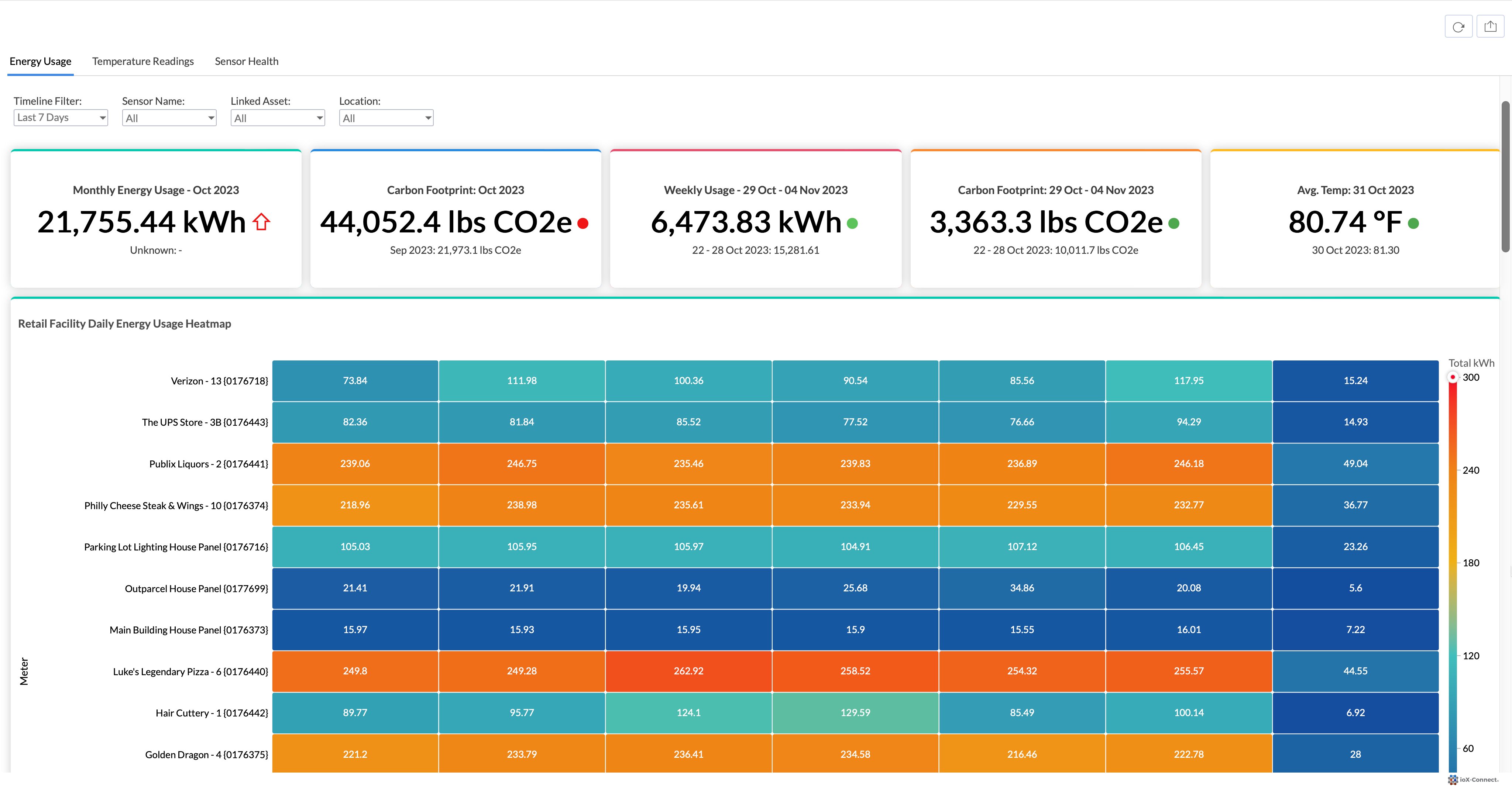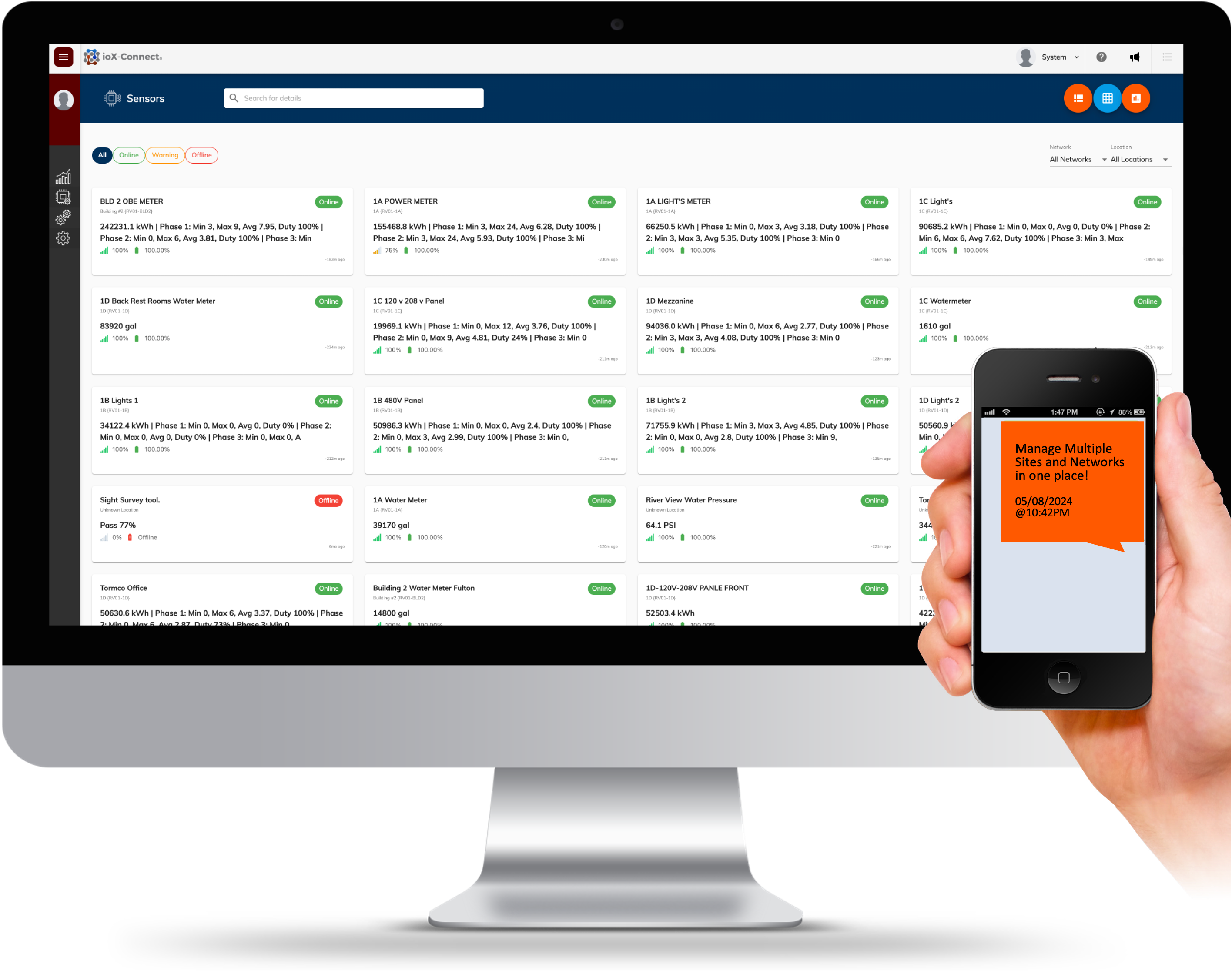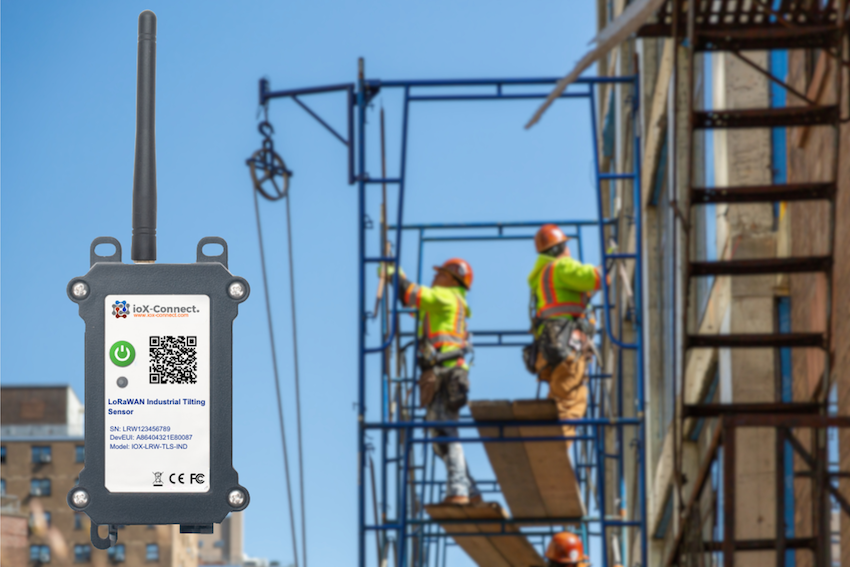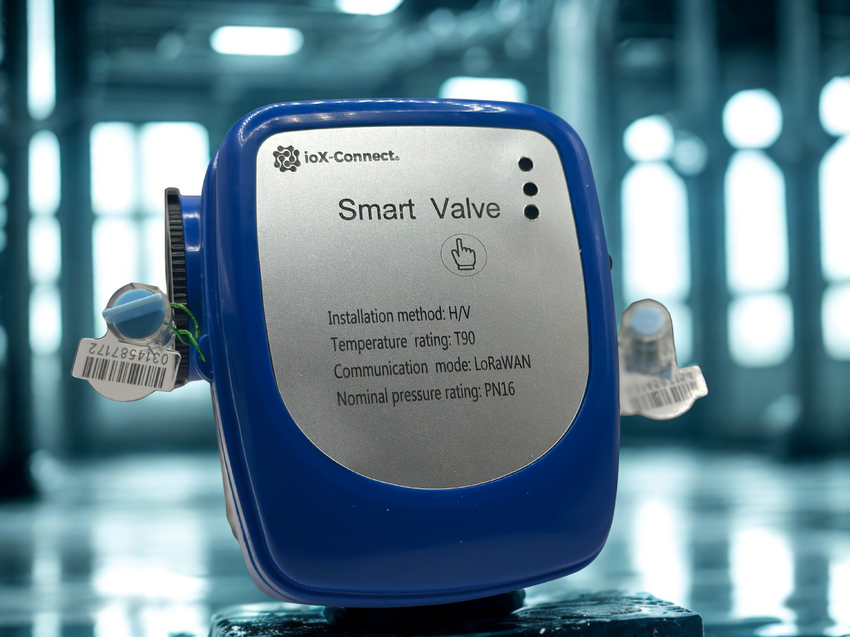What is Energy Monitoring?
Master Your Energy: Optimize, Save, and Sustain
In today’s world, where energy costs are rising and environmental consciousness is on the increase, managing energy efficiently is more critical than ever. Energy monitoring stands at the forefront of this movement, offering powerful tools to track, analyze, and optimize energy usage. Whether you’re a business looking to reduce operational costs, a homeowner aiming to shrink your carbon footprint, or an industry professional seeking compliance with environmental regulations, energy monitoring is the key to achieving your goals.
On this page, we dive into the mechanics of energy monitoring, highlight its essential advantages, and showcase the cutting-edge technologies propelling this sector forward. From grasping the fundamental concepts to exploring the intricacies of sophisticated system capabilities, this page acts as a brief guide to help you make informed choices that are beneficial for your business and simultaneously advantageous for our planet.
- The Power of Energy Monitoring
- What is Energy Monitoring?
- Why Energy Monitoring is Important
- Types of Energy Monitoring Systems
- Key Benefits of Energy Monitoring
- Essential Features of Energy Monitoring Systems
- Setting Up Your Energy Monitoring System
- Interpreting Energy Data for Maximum Efficiency
- Strategies for Reducing Energy Consumption
- The Future of Energy Monitoring: Trends and Innovations
- Conclusion: Taking the Next Steps in Energy Efficiency
Unlock Efficiency, Sustainability, and Savings
Energy monitoring is not just about tracking energy consumption; it's about unlocking the full potential of every watt and joule used in your facility or home. This powerful tool transforms raw data into actionable insights, enabling users to make informed decisions that drastically improve energy efficiency and operational performance.
Key Aspects of Energy Monitoring:
- Visibility: Gain a clear view of when, where, and how energy is consumed. This visibility is the first step towards effective management, as it reveals patterns and areas where improvements can be made.
- Control: With real-time data at your fingertips, you can immediately respond to issues as they arise and adjust settings to optimize energy use. This level of control helps prevent wastage and can significantly reduce costs.
- Predictive Maintenance: By monitoring equipment and energy usage, anomalies can be detected before they lead to major failures. This proactive approach not only saves energy but also extends the lifespan of your assets.
- Regulatory Compliance: Many industries face strict regulations on energy consumption and emissions. Energy monitoring helps ensure compliance by providing precise tracking and reporting capabilities.
Benefits Across Sectors:
- Commercial: Businesses see direct cost reductions and improved profit margins through effective energy management. Retailers, office buildings, and service providers can all benefit from reduced operational costs and enhanced corporate responsibility.
- Industrial: For manufacturing plants and industrial complexes, energy monitoring is integral to maintaining equipment efficiency and production continuity. It also helps in reducing environmental impact and complying with industrial standards.
- Residential: Homeowners benefit by lowering their energy bills and contributing to a cleaner environment. Smart home technologies integrated with energy monitoring systems allow for automated management, adding convenience and control.
A Tool for Today and Tomorrow:
As we move towards a more sustainable future, the importance of energy efficiency cannot be overstated. Energy monitoring stands as a critical tool in this endeavor, enabling businesses, industries, and individuals to make a significant impact on their energy usage patterns, financial health, and ecological footprint.
In embracing energy monitoring, you are not only investing in the health of your operations but also contributing to the global effort towards energy conservation and environmental protection. Discover the power of energy monitoring and take a decisive step towards a more sustainable and efficient future.
Understanding the Basics and Importance
Energy monitoring is the process of tracking, recording, and analyzing the energy consumption of a building, facility, or specific equipment over time. Using advanced sensors and metering technology, this system collects data that is vital for evaluating energy usage patterns and identifying areas for improvement.
Core Components:
- Sensors and Meters:
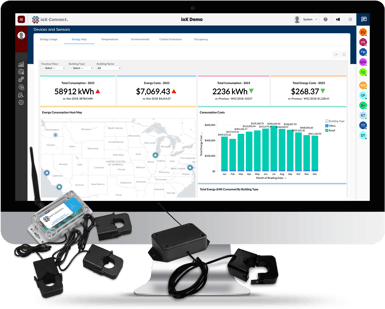 These devices are installed at various points in an energy system to measure the flow of electricity, water, gas, or heat. They are the primary tools for capturing quantitative data on energy consumption.
These devices are installed at various points in an energy system to measure the flow of electricity, water, gas, or heat. They are the primary tools for capturing quantitative data on energy consumption. - Data Acquisition Systems: This technology aggregates the data collected by sensors and meters. It acts as the backbone of the energy monitoring system, ensuring that data is accurately collected in real time.
- Analytics Software: Advanced software analyzes the collected data to provide insights. It generates detailed reports, visualizes trends through charts and graphs, and offers recommendations for reducing energy wastage.
How It Works:

- Installation: Sensors and meters are strategically placed throughout the facility to capture detailed energy consumption data from various sources and systems.
- Data Collection: These devices continuously gather energy usage data and transmit it to a central data repository.
- Data Analysis: Software tools process this data to identify trends, peak usage times, and potential inefficiencies.
- Reporting and Action: The system generates user-friendly reports and dashboards that help users understand their energy consumption patterns and take informed actions to improve efficiency.
Why It Matters:
Effective energy monitoring allows organizations and homeowners to achieve multiple goals:
- Cost Efficiency: By identifying and eliminating areas of excessive energy use, significant cost savings can be realized.
- Operational Efficiency: Understanding energy usage helps optimize operations and equipment performance, leading to better overall efficiency.
- Sustainability Goals: Reducing energy consumption directly correlates with lower carbon emissions, helping meet environmental targets and sustainability goals.
By providing a detailed look into when, where, and how energy is used, energy monitoring empowers users to make strategic decisions that lead to more efficient and responsible energy management. Whether for a large industrial facility or a modest residential home, energy monitoring is a pivotal tool in the quest for energy optimization and environmental stewardship.
Catalyst for Cost Savings and Sustainable Practices
The importance of energy monitoring extends beyond simple oversight of energy consumption; it is a critical strategy for achieving a range of financial, operational, and environmental goals. Below are the key reasons why energy monitoring is an indispensable tool in today's energy-conscious world.
Financial Benefits:
- Reduce Energy Costs: By identifying inefficient practices and equipment, energy monitoring helps reduce unnecessary energy usage and, consequently, lowers energy bills.
- Predictive Budgeting: With detailed insights into energy consumption patterns, businesses and homeowners can forecast future energy costs more accurately, aiding in better financial planning.
Operational Advantages:
- Enhanced Equipment Performance: Regular monitoring helps detect performance issues in equipment early, allowing for timely maintenance and repairs which extend the lifespan of assets.
- Optimization of Energy Usage: Real-time data enables businesses to adjust operations dynamically, optimizing energy use during peak and off-peak periods to take advantage of lower rates.
Environmental Impact:
- Reduction in Carbon Footprint: Effective energy management leads to reduced power consumption, which directly decreases greenhouse gas emissions associated with energy production.
- Support for Renewable Energy Integration: Monitoring systems can be integral in managing and balancing energy loads, especially where renewable energy sources like solar and wind are employed.
Regulatory Compliance:
- Adherence to Energy Standards and Regulations: Many industries are subject to energy consumption regulations. Energy monitoring systems help ensure compliance with these standards, avoiding penalties and contributing to an organization’s legal and corporate responsibility efforts.
Strategic Decision Making:
- Data-Driven Strategies: The detailed analytics provided by energy monitoring systems furnish managers with the insights needed to make informed decisions about energy use, investment in energy-efficient technologies, and long-term energy planning.
Promotion of Energy Conscious Culture:
- Employee Engagement and Awareness: Implementing an energy monitoring system can also help foster a culture of energy consciousness within an organization. By visualizing and discussing energy use data, employees become more aware of their consumption habits and the impact of their actions on operational costs and environmental outcomes.
Ultimately, energy monitoring transcends the basic role of a utility oversight mechanism; it embodies a holistic approach that boosts financial outcomes, enhances operational effectiveness, champions ecological responsibility, and underpins both strategic foresight and adherence to regulations. It stands as a pivotal practice for any entity or individual dedicated to refining energy management and championing a sustainable future.
Tailored Solutions for Diverse Needs
Energy monitoring systems come in various forms, each designed to suit different environments and objectives. Understanding the types available helps in selecting the right system that aligns with your specific needs. Here’s an overview of the primary types of energy monitoring systems:
1. Basic Plug-in Monitors:
- Purpose: Ideal for monitoring individual appliances or specific areas within a home or small office.
- Features: These are typically easy-to-use devices that plug directly into an outlet and provide immediate data on the energy usage of the connected appliance.
2. Whole-House Energy Monitors:
- Purpose: These systems are designed to monitor the total energy usage of an entire home or building.
- Features: Installation often involves connection to the home's electrical panel, providing real-time data on overall energy consumption, which can be viewed on a smartphone or computer.
3. Networked Energy Monitoring Systems:
- Purpose: Suitable for larger commercial or industrial facilities requiring detailed monitoring across multiple locations and systems.
- Features: These systems integrate multiple meters and sensors that communicate data back to a central management software, offering comprehensive analytics and reporting capabilities.
4. Integrated Building Management Systems (BMS):
- Purpose: Employed in larger commercial buildings, these systems provide holistic management of all building operations, including energy, HVAC, lighting, and security.
- Features: BMS systems are highly customizable, supporting extensive data integration from various building systems to optimize overall energy efficiency and building performance.
5. IoT-Based Energy Monitoring Systems:
- Purpose: To leverage the latest in technology for the most efficient monitoring and management.
- Features: These systems utilize Internet of Things (IoT) technology to allow for remote monitoring and control. They provide extensive data collection and analytics capabilities, enabling predictive maintenance and energy management at scale.
6. Sector-Specific Energy Monitoring Systems:
- Purpose: Designed for specific industries such as manufacturing, retail, or hospitality, where specialized monitoring solutions can significantly improve energy efficiency and operational costs.
- Features: These systems are tailored to address the unique challenges and compliance requirements of each sector, integrating industry-specific metrics and performance indicators.
Choosing the Right System:
When selecting an energy monitoring system, consider factors such as:
- Scale of monitoring required (single device, entire building, multiple facilities)
- Specific energy goals (cost reduction, sustainability, compliance)
- Budget
- Technical support and scalability
By choosing the appropriate type of energy monitoring system, you can ensure that you have the tools necessary to effectively manage and reduce your energy consumption, aligning with both your financial and environmental objectives.
Enhancing Efficiency, Sustainability, and Financial Performance
Energy monitoring offers a multitude of benefits that span economic, operational, and environmental aspects. Here's a deeper look at how these advantages can transform an organization or household:
1. Economic Advantages:
- Direct Cost Savings: By providing detailed insights into energy usage, energy monitoring systems help identify wasteful practices, allowing users to eliminate unnecessary energy expenditure and substantially lower utility bills.
- Return on Investment (ROI): Investments in energy monitoring technology often pay off quickly through significant reductions in energy costs. Over time, the savings generated can exceed the initial setup and operational costs, delivering a strong ROI.
2. Operational Efficiency:
- Improved Equipment Performance: Continuous monitoring allows for the optimal operation of machinery and equipment. By understanding how and when energy is used, adjustments can be made to enhance efficiency and prevent overuse, which can lead to equipment wear and tear.
- Enhanced Maintenance Schedules: Energy monitoring systems can predict when a piece of equipment is likely to fail or need maintenance, leading to more efficient maintenance schedules and fewer unexpected breakdowns.
3. Environmental Impact:
- Reduced Carbon Footprint: Efficient energy use directly translates to fewer carbon emissions, helping organizations meet sustainability targets and contributing to global environmental efforts.
- Support for Green Credentials: Companies can leverage their improved energy efficiency metrics to enhance their marketability and meet customer and stakeholder expectations regarding environmental responsibility.
4. Data-Driven Decision Making:
- Strategic Energy Planning: With the detailed insights provided by energy monitoring, businesses can make more informed decisions about energy consumption and investment in energy-saving technologies.
- Policy and Practice Implementation: Organizations can develop or adjust energy policies based on accurate, up-to-date energy usage data, fostering a more energy-efficient culture.
5. Regulatory Compliance and Reporting:
- Ease of Compliance: For industries regulated under energy consumption laws, energy monitoring simplifies the process of complying with these regulations through precise tracking and automated reporting.
- Enhanced Reporting Capabilities: Energy monitoring systems can automate the generation of reports for internal stakeholders or regulatory bodies, showcasing compliance and improvements in energy usage.
6. Enhanced Public Image:
- Corporate Social Responsibility (CSR): By actively managing and reducing their energy consumption, companies can strengthen their CSR efforts, enhancing their public image and building trust with customers and stakeholders.
7. Scalability and Flexibility:
- Scalable Solutions: Whether for a single unit in a residential setup or multiple facilities in a corporate chain, energy monitoring systems are scalable to any size. They can be expanded or adjusted as needs change, providing flexibility and longevity of the investment.
8. Technological Integration:
- Seamless Integration with IoT: Modern energy monitoring systems integrate seamlessly with IoT devices, providing more granular data and enabling remote monitoring and control, which enhances user convenience and control over their energy management strategies.
To sum it up, the advantages of implementing energy monitoring systems reach well beyond the immediate financial gains. They touch on every facet of how homes and organizations function. Through the strategic adoption of energy monitoring, stakeholders not only bolster their operational efficiency and lessen their environmental footprint but also see marked improvements in their financial standing and adherence to compliance standards. Moreover, this commitment plays a pivotal role in elevating their public persona and aligning with the wider objectives of sustainability.
Key Components for Effective Energy Management
A well-equipped energy monitoring system is crucial for achieving detailed insights and control over energy consumption. The effectiveness of such a system is largely determined by its features. Here are the essential features that should be present in any robust energy monitoring system, providing the foundation for efficient and effective energy management:
1. Real-Time Monitoring: Enables immediate observation of energy usage as it occurs. This helps identify spikes or drops in energy usage instantly, allowing for prompt responses to potential issues.
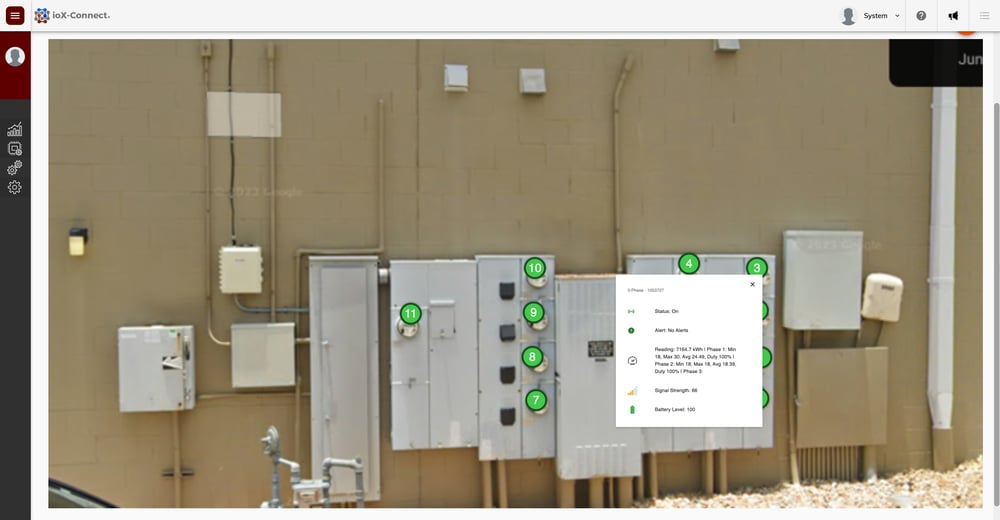
2. Detailed Data Analytics: To convert raw data into actionable insights. Facilitates informed decision-making by providing trends, patterns, and predictive analytics that help optimize energy usage.
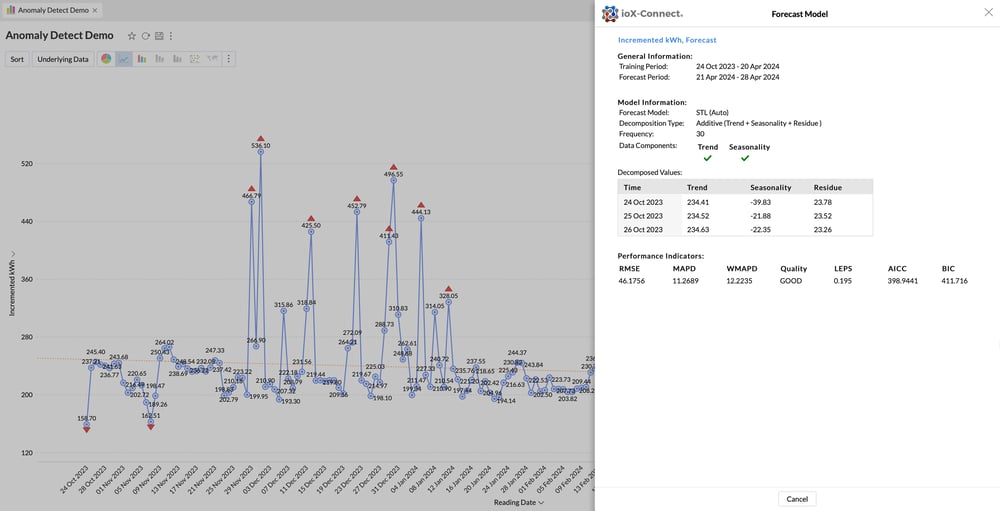
3. Comprehensive Reporting Tools: Simplifies the presentation and sharing of data. Customizable reports and dashboards make it easier for different stakeholders to understand and act on energy data. This includes capabilities for generating automated reports that can be used for compliance, financial planning, and operational adjustments.
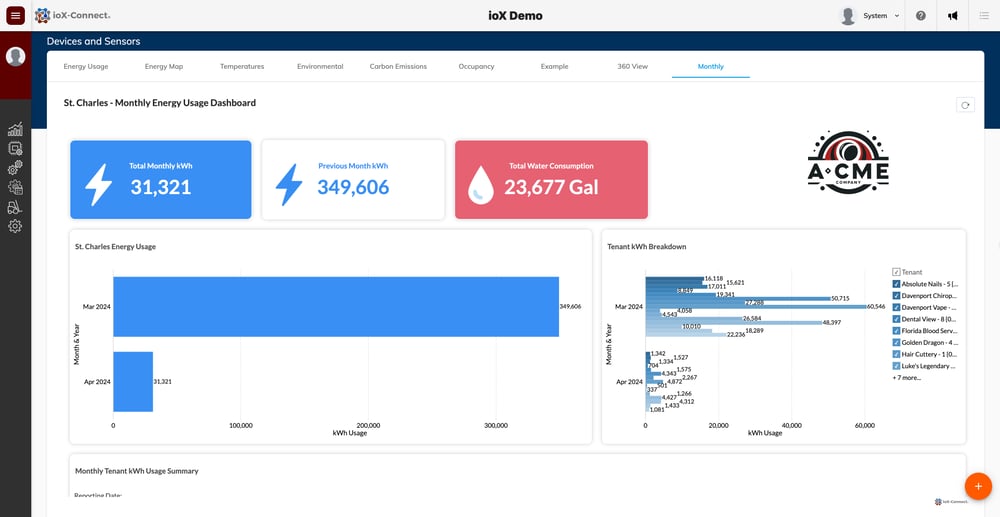
4. Customizable Alerts and Notifications: To provide timely updates on critical events or anomalies. Users should be able to set thresholds for energy usage that, when exceeded, trigger alerts. This ensures that any unusual or inefficient energy usage is quickly addressed, preventing wastage and potential equipment damage.
5. Scalability: Whether expanding the physical area covered or integrating more complex systems, a scalable monitoring solution can adapt to increasing demands without the need for complete replacement.
6. User-Friendly Interface: To make the system accessible to all users, regardless of technical expertise. A clear and intuitive interface ensures that all users can effectively interact with the system, making it easier to implement changes and understand data without specialized training.
7. Integration Capabilities: Allows the system to work seamlessly with existing hardware and software. Reduces the complexity and cost of setup and ensures that data from various sources can be centralized for a more comprehensive analysis.
8. Security Features: To protect sensitive data and system access. Advanced encryption and secure user authentication protocols ensure that data integrity and privacy are maintained, crucial for compliance and trust.
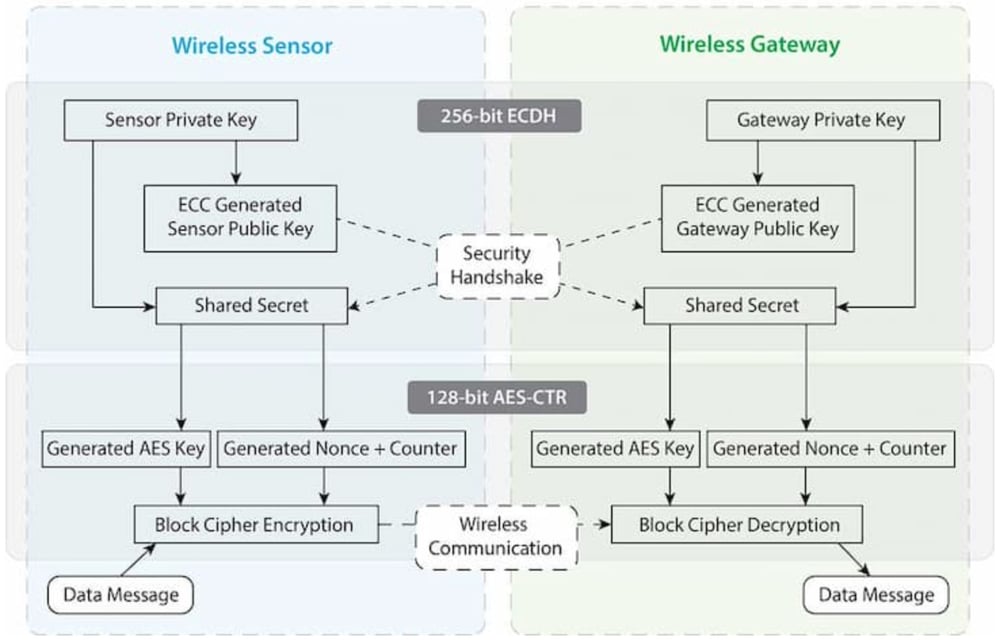
9. Remote Access and Control: Enables management of the system from any location. With cloud-based technologies, users can monitor and adjust settings remotely, enhancing convenience and enabling quick reactions to data regardless of the user's location.
10. Energy Budgeting and Forecasting Tools: To aid in financial planning and energy conservation efforts. These tools help predict future energy costs and usage, allowing for better financial and operational planning.
11. Environmental Impact Metrics: To track and report on sustainability goals. Provides metrics related to carbon footprint and other environmental impacts, assisting in reporting for sustainability certifications and initiatives.
Each of these features plays a vital role in the utility and effectiveness of an energy monitoring system. By ensuring your system includes these components, you can maximize your ability to manage energy consumption effectively, achieving both immediate cost savings and long-term sustainability objectives.
Step-by-Step Guide to Implementation
Implementing an energy monitoring system is a critical step towards achieving efficient energy usage and sustainability goals. Here's a brief guide to help you set up your system effectively:
1. Assess Your Needs:
- Objective: To pinpoint the exact requirements for your system, taking into account your objectives, the scale of your operations, and patterns in energy consumption.
- Method: Initiate an energy audit to uncover crucial monitoring zones and the most impactful data types. Determine the necessity for either a streamlined system aimed at a designated area or a robust solution encompassing several locations.
2. Choose the Right System:
- Objective: To select an energy monitoring system that best fits your identified needs.
- Method: Evaluate different systems based on the essential features previously outlined. Consider factors like scalability, integration capabilities, and user-friendliness. Also, review customer feedback and case studies from similar implementations to gauge effectiveness.
3. Plan the Installation:
- Objective: To ensure a smooth setup without disrupting existing operations.
- Method: Map out installation points for sensors and meters based on your energy audit. Plan the process in stages if necessary to minimize operational disruptions. Engage with professionals if high-level integrations are involved, particularly for systems that interface with critical infrastructure.
4. Install the Hardware:
- Objective: To set up the physical components of the energy monitoring system.
- Method: Follow manufacturer instructions for installing meters and sensors. Ensure that installations are done safely and comply with local regulations. Use qualified technicians for installations involving electrical systems to avoid potential hazards.
5. Configure the Software:
- Objective: To tailor the system’s software for optimal data analysis and reporting.
- Method: Input your specific parameters into the system, such as utility rates, operational hours, and energy goals. Customize dashboards and reports to reflect the most relevant information. Set up alerts and notifications for specific thresholds to maintain control over energy usage.
6. Train Your Team:
- Objective: To ensure that all relevant personnel are capable of using the system effectively.
- Method: Provide training sessions for your team, focusing on how to interpret data, respond to alerts, and use the software to make informed decisions. Include training on troubleshooting minor issues to ensure smooth operation.
7. Launch and Monitor the System:
- Objective: To begin collecting data and utilizing the system to its full potential.
- Method: Start the system and monitor its performance closely during the initial phase. Verify that all components are functioning correctly and that data is being accurately captured and reported.
8. Evaluate and Adjust:
- Objective: To optimize the system based on initial insights and performance.
- Method: After a few months of operation, evaluate the system's impact on your energy usage and costs. Look for any areas that may need adjustments, such as sensor placements or alert settings. Continue to refine and expand the system as needed to meet evolving goals.
9. Continuous Improvement:
- Objective: To ensure the system remains effective over time.
- Method: Regularly review and update the system to incorporate new technologies, adapt to changes in your operations, and meet new regulatory requirements. Engage in ongoing training and development to keep staff informed of best practices in energy management.
By following these steps, you can successfully implement an energy monitoring system that will provide valuable insights into your energy consumption, promote significant cost savings, and support your environmental and sustainability objectives.
Turning Data into Actionable Insights
Energy monitoring systems generate a wealth of data that, when properly analyzed and interpreted, can lead to significant improvements in energy efficiency and cost reduction. Here’s how to make the most out of the data your system provides:
1. Understanding the Basics:
Effective energy data interpretation starts with understanding key metrics like kilowatt-hours, peak demand times, and load profiles. Knowing these basics is essential for recognizing consumption patterns, evaluating usage efficiency, and identifying areas for improvement. This knowledge enables you to use your energy monitoring system to its full potential, turning data into actionable insights for better energy efficiency decisions.
2. Establish Benchmarks:
Establishing benchmarks is essential for energy management, serving as standard references to measure against current use. By analyzing past energy data, benchmarks highlight typical consumption, guiding the assessment of energy-saving efforts and spotting deviations. These benchmarks, which should be regularly updated to reflect operational changes, aid in detecting inefficiencies and setting targets for improved energy efficiency and cost savings.
3. Identify Patterns and Trends:
Identifying patterns and trends in energy use through daily to yearly data analysis is crucial for optimizing energy consumption. This approach allows for the detection of regular spikes and seasonal variations, guiding the adjustment of equipment schedules and system settings to enhance efficiency and reduce waste. This process is vital for improving operational practices and sustaining energy savings.
4. Utilize Advanced Analytics:
Advanced analytics leverage sophisticated algorithms to deepen energy data analysis. Through predictive analytics and machine learning, future energy needs are forecasted, and potential issues are preemptively identified. This enables a proactive management of operational costs and enhances equipment reliability by preventing downtime. Additionally, these tools offer insights into the effectiveness of energy-saving measures, promoting continuous strategy refinement. By adopting advanced analytics, energy management shifts from reactive to strategic, optimizing energy usage and supporting informed decision-making organization-wide.
5. Report Generation and Visualization:
Effective energy management relies on clear data understanding and communication, achieved through report generation and visualization tools in energy monitoring systems. These tools simplify complex data into charts, graphs, and heat maps, making energy consumption trends and inefficiencies more understandable. This not only aids in internal analysis but also helps explain energy usage to non-technical stakeholders for better decision-making. Customizable dashboards highlight relevant metrics, improving system usability and compliance with energy policies. Thus, these tools facilitate informed, data-driven decisions for energy and cost savings.
6. Make Informed Decisions:
The ultimate aim of analyzing energy data is to drive informed decision-making. By understanding energy patterns and inefficiencies, organizations can make strategic choices to improve operations and finances. This includes upgrading to more efficient equipment, adjusting hours to save on energy costs, or investing in renewable sources for sustainability.
For instance, if data shows that a significant amount of energy is used during peak tariff times, a decision could be made to shift high-energy processes to off-peak hours. Similarly, if certain sections of a facility consistently show higher energy usage without a corresponding increase in output, it could lead to decisions about retrofitting those areas with more efficient equipment or revising work practices.
Energy monitoring insights streamline long-term strategic planning, directing budgeting towards energy projects, sharpening energy reduction goals, and shaping sustainability policies. With precise data, management can confidently enact decisions that cut costs, bolster corporate social responsibility, and elevate the organization's competitive standing.
By continuously refining strategies based on up-to-date energy data, organizations can maintain optimal energy usage, adapt to changing market conditions, and uphold their commitment to sustainability—all of which are critical in today’s energy-conscious environment.
7. Continuous Monitoring and Feedback:
Continuous monitoring and feedback are essential for maintaining and enhancing energy efficiency over time. This ongoing process allows organizations to stay on top of their energy usage, immediately address any deviations from expected patterns, and continuously refine their energy management strategies based on real-time data.
8. Collaborative Review:
Collaborative review is an integral part of effectively interpreting and acting on energy data. By involving multiple departments or teams in the review process, organizations can benefit from diverse perspectives and expertise, leading to more comprehensive energy management strategies. This collaborative approach ensures that data is not only analyzed from a technical standpoint but also considered within broader operational contexts. For instance, facilities management might focus on the operational efficiencies, while the finance team evaluates the cost implications of energy usage patterns.
Regular meetings to discuss energy reports can foster a shared understanding of goals and challenges, leading to more cohesive and coordinated efforts across the organization. During these sessions, team members can share observations, highlight successes, discuss areas of concern, and brainstorm potential improvements. This inclusive approach not only enhances problem-solving capabilities but also promotes a culture of energy awareness and responsibility throughout the organization.
Furthermore, collaborative reviews help in aligning energy efficiency initiatives with overall business objectives, ensuring that energy management is integrated into all aspects of organizational planning and decision-making. By regularly bringing together different stakeholders to review energy data, organizations can maintain a unified focus on optimizing energy usage, which is crucial for achieving sustainable operational excellence.
Effective Tactics for Enhanced Energy Efficiency
Strategic Approaches to Minimize Consumption and Maximize Savings
Achieving enhanced energy efficiency within an organization or home is not just about using less energy, but about using it more intelligently. Effective energy management tactics not only reduce energy consumption but also improve operational efficiency and environmental sustainability. Here’s a detailed look at several strategic approaches to enhance energy efficiency:
- Optimize Operational Schedules: Adjusting the timing of operations to coincide with lower energy tariff periods can significantly reduce costs. For instance, heavy energy-consuming machinery can be scheduled during off-peak hours when energy rates are lower. This strategy not only cuts expenses but also reduces the load on the power grid during peak times, contributing to overall energy stability in the community.
- Retrofit and Upgrade Equipment: Old or inefficient equipment can consume a disproportionate amount of energy. By retrofitting systems with modern, energy-efficient technologies, such as upgrading HVAC systems or replacing old lighting with LED fixtures, organizations can see a dramatic decrease in energy usage. These upgrades often pay for themselves through the savings they generate over time, making them a wise investment for long-term efficiency.
- Enhance Heating, Ventilation, and Air Conditioning (HVAC) Systems: HVAC systems are among the largest consumers of energy in buildings. Regular maintenance, such as cleaning and replacing filters or repairing leaks in ductwork, can significantly improve their efficiency. Additionally, installing programmable thermostats or advanced HVAC management systems can optimize heating and cooling schedules based on actual building occupancy and weather conditions.
- Implement Lighting Upgrades: Lighting upgrades are one of the simplest yet most effective ways to enhance energy efficiency. Transitioning to LED lighting, which uses at least 75% less energy than traditional incandescent bulbs, not only reduces energy consumption but also decreases the frequency of bulb replacements due to their longer lifespan.
- Improve Building Insulation: Enhancing a building’s insulation can reduce the need for heating and cooling by keeping interior spaces at a more consistent temperature. This involves upgrading windows, walls, roofs, and floors with high-quality insulation materials. Proper sealing and weather-stripping can also prevent energy losses through gaps around doors and windows.
- Promote Energy Awareness and Behavior Change: Educating employees or family members about the importance of energy conservation and how their behaviors impact overall energy use can lead to significant reductions in energy consumption. Simple actions like turning off lights when not in use or optimizing settings on personal and office equipment can cumulatively lead to considerable energy savings.
- Utilize Renewable Energy Sources: Incorporating renewable energy sources, such as solar panels or wind turbines, can drastically reduce reliance on non-renewable energy sources and lower energy bills. Monitoring systems can help optimize the use of these technologies by efficiently managing the energy they produce and integrating it into existing energy systems.
- Conduct Regular Energy Audits: Regular energy audits allow organizations to systematically evaluate how energy is being used and identify opportunities for improvement. These audits can pinpoint specific areas where energy waste is occurring and suggest appropriate measures to address these inefficiencies.
- Monitor and Adjust Based on Data Feedback: Continuous monitoring and adjustment based on real-time data feedback ensure that energy-saving measures are effective and that systems are operating at optimal efficiency. This ongoing process allows for the fine-tuning of strategies and technologies to adapt to changing conditions and new opportunities for savings.
By implementing these strategies, organizations and households can significantly enhance their energy efficiency. Each tactic not only contributes to immediate reductions in energy use but also sets the foundation for sustainable practices that benefit both economic and environmental objectives.
Navigating Towards a Smarter, More Sustainable Future
The field of energy monitoring is rapidly evolving, driven by technological advancements and increasing environmental concerns. As we look to the future, several key trends and innovations are shaping the landscape, offering new opportunities for enhancing energy efficiency and integrating smarter energy management systems. Here’s an overview of what's on the horizon:
1. Integration of Artificial Intelligence and Machine Learning:
- Purpose: To enhance the predictive capabilities of energy monitoring systems.
- Details: AI and machine learning algorithms can analyze vast amounts of data to predict future energy trends, identify anomalous consumption patterns, and recommend optimal energy usage strategies. These technologies enable systems to learn from past data, improving their accuracy and effectiveness over time.
2. Increased Use of IoT Devices:
- Purpose: To expand data collection points and improve system interconnectivity.
- Details: The proliferation of IoT devices allows for more granular energy monitoring and control. Sensors and smart meters can be installed across a variety of assets, from industrial machinery to household appliances, providing real-time data that can be used to further refine energy strategies.
3. Advancements in Battery Storage Technology:
- Purpose: To enhance the viability of renewable energy by improving energy storage solutions.
- Details: As battery technology advances, the ability to store energy more efficiently helps balance the intermittency of renewable sources like solar and wind. This not only stabilizes the grid but also maximizes the utilization of generated renewable energy.
4. Blockchain for Energy Transactions:
- Purpose: To create a more transparent and efficient way to manage energy transactions.
- Details: Blockchain technology can be used to track and verify energy usage and generation in real-time, facilitating peer-to-peer energy trading and helping consumers sell excess energy back to the grid without the need for traditional intermediaries.
5. Smart Grids and Demand Response Systems:
- Purpose: To optimize energy distribution and consumption in response to supply fluctuations.
- Details: Smart grids use predictive analytics to efficiently distribute energy based on demand. Demand response systems further enhance this by adjusting the energy consumption of interconnected devices during peak times, reducing strain on the grid and preventing outages.
6. Enhanced Sustainability Reporting:
- Purpose: To meet increasing regulatory and consumer demands for transparency in energy usage.
- Details: Energy monitoring systems will likely incorporate more comprehensive reporting features that not only track energy efficiency but also calculate environmental impact metrics such as carbon emissions. This aids organizations in adhering to stricter environmental regulations and fulfilling corporate sustainability goals.
7. Personalized Energy Management:
- Purpose: To tailor energy usage strategies to individual needs and preferences.
- Details: Future energy monitoring systems will offer more personalized energy management solutions based on user behavior patterns, preferences, and goals. This customization will help maximize energy savings and enhance user engagement with the energy monitoring system.
8. Integration with Electric Vehicles (EVs):
- Purpose: To manage the energy demands of EVs more effectively.
- Details: As EV adoption increases, energy monitoring systems will need to integrate with EV charging infrastructure to manage the additional energy demand efficiently. This includes optimizing charging times based on energy availability and pricing.
The future of energy monitoring promises not only greater efficiency and cost savings but also a stronger alignment with sustainability initiatives. These trends and innovations will empower businesses and consumers alike to take more active roles in managing their energy consumption, driving us towards a more energy-efficient and environmentally responsible world.
Empowering Actions for a Sustainable Future
As we conclude our exploration of energy monitoring, it's clear that the benefits of implementing such systems are vast, impacting economic savings, operational efficiency, and environmental sustainability. Energy monitoring is not merely a tool for observing energy use; it is an essential component of a proactive strategy aimed at optimizing energy consumption and enhancing overall performance.
To Summarize some of the Key Points:
- Comprehensive Understanding: Energy monitoring provides detailed insights into your energy usage patterns, helping to identify inefficiencies and areas for improvement.
- Strategic Implementation: The right energy monitoring system can transform data into actionable intelligence, allowing for smarter operational decisions and more effective use of resources.
- Technological Integration: With advancements in AI, IoT, and smart grid technologies, energy monitoring systems are becoming more sophisticated, offering predictive analytics and real-time data that lead to better management and reduced costs.
- Sustainability Enhancement: By reducing energy consumption and carbon emissions, energy monitoring systems contribute significantly to environmental sustainability goals, enhancing your organization’s green credentials.
Encouraging Proactive Steps:
- Assess Your Current Energy Usage: Begin by understanding your existing energy consumption through an audit. This initial step will help pinpoint areas where energy monitoring can have the most impact.
- Choose the Right System: Select a monitoring system that matches your specific needs, considering factors such as size, scope, and the specific features that will benefit your operations.
- Implement and Integrate: Install the chosen system and integrate it with your existing operations. Ensure that it’s not just implemented technically but also embraced by the organization culturally.
- Regularly Review and Optimize: Energy management is an ongoing process. Regularly analyze the data collected, and use it to continuously refine and enhance your energy strategies.
Now is the time to take decisive action towards improving your energy efficiency. By investing in an energy monitoring system, you not only cut costs and enhance operational efficiency but also contribute to a sustainable future. We encourage you to explore the options ioX-Connect has available, engage with our experts to find tailored solutions, and commit to making energy efficiency a core part of your operational strategy.
Whether you are a business owner, facility manager, or a sustainability advocate, embracing energy monitoring is stepping towards a more energy-conscious and resource-efficient future. Start today—every step you take is a stride towards sustainability and operational excellence.
Our Products and Services
We're here to help, do not hesitate to reach out to us by scheduling a quick call with one of our consultants.
Contact Us
Our customer service representative helps you to understand what we offer for your business goals.
Additional Frequently Asked Questions regarding Energy Monitoring
Please reach out to us at: sales@iox-connect.com if you have any additional questions that are not addressed below.
How Energy Monitoring Products Enhance Equipment Productivity and Cut Costs
Energy monitoring products are more than just tools for tracking power usage; they are strategic assets in optimizing your business operations.
Insight into Power Usage
By providing real-time data on your energy consumption, these devices allow you to identify which machines are the biggest energy consumers. Understanding these major loads enables you to adjust operations and distribute power more efficiently, leading to better equipment performance.
Optimize Equipment Life
Knowing when and how you're consuming energy can significantly impact your equipment's lifespan. Monitoring tools help you determine peak usage times, allowing you to minimize wear and tear by scheduling maintenance during low demand periods, ultimately enhancing productivity and longevity.
Cost Savings Through Analysis
These insightful products also allow you to dissect your energy costs, helping you realize when and where you're spending the most. By utilizing this information, you can make informed decisions to reduce unnecessary power usage, directly translating to lower energy bills.
Quality Control of Power
Another aspect is the ability to assess the quality of the electricity your operations rely on. Poor power quality can disrupt machinery and lead to costly downtime. Energy monitors can detect fluctuations and irregularities, enabling proactive measures to maintain optimal equipment performance.
In conclusion, energy monitoring products offer a comprehensive approach to boosting your operations. By leveraging data on power use, these tools are pivotal in enhancing productivity, extending equipment life, and significantly cutting energy costs, contributing to the overall profitability of your business.
Discover a Range of Energy Monitoring Solutions
When it comes to energy monitoring, there's a wide array of products designed to meet diverse needs, from comprehensive power analysis to specific electrical measurements. Here's a glimpse into what's available in the marketplace:
Advanced Power Monitors
For those seeking detailed insights into their energy consumption, advanced power monitors are essential. These devices provide extensive data on electrical usage and can help optimize energy efficiency.
Compact Energy Meters
If you're looking for something simpler and more focused, compact energy meters offer reliable readings of power usage, often ideal for smaller installations or specific devices.
Current Transformers
An integral part of many monitoring setups, current transformers work by measuring the current in a conductor, making them crucial for effective energy audits and real-time monitoring.
Voltage Monitors
For pinpointing voltage variations and ensuring optimal performance of electrical systems, voltage monitors are indispensable. They alert users to potential issues before they become major problems.
Accessories and Upgrades
To enhance or customize your energy monitoring system, a plethora of accessories and upgrade options are available. This can include additional sensors, networking capabilities, or enhanced software for deeper analytics.
With these varied solutions, users can tailor their energy monitoring approach to best fit their specific needs, ensuring they have the information required to make informed energy management decisions.
Current Transformers (CTs) are essential tools in energy monitoring, designed to seamlessly integrate with a wide range of applications. They play a crucial role in providing accurate voltage transformation, making them indispensable in various power measurement scenarios.
Suitable Applications for Current Transformers in Energy Monitoring:
-
Protective Relays: CTs are often used with protective relays to ensure safety and operational efficiency by detecting abnormalities in current flow and triggering protective measures.
-
Analog Devices: These transformers support analog measuring devices, enabling the precise monitoring of energy flow and system health.
-
Transducers: By converting current into a readable form, CTs help transducers provide vital data for monitoring and analyzing energy usage.
-
Energy Monitoring Systems: CTs are integral to comprehensive energy monitoring platforms, offering reliable data for load management, power quality analysis, and system diagnostics.
With their versatile applicability and precision, Current Transformers are a cornerstone in optimizing energy management systems across various industries.
Unlock Energy Savings with the ioX 500Amp Three-Phase AC Current Meter
Cost-Effective Sub-Metering
Designed as a budget-friendly sub-metering tool, this monitor ensures you don't break the bank while gaining critical energy insights. It's a smart investment for businesses aiming to optimize their energy strategies.
Informed Decision-Making
With real-time access to essential energy metrics, you can make informed decisions directly within your operations. This ability to respond swiftly can lead to reduced energy usage, providing both environmental and financial benefits.
Boosted Profit Margins
By tracking and managing energy consumption effectively, the ioX Three-Phase Current Meter helps in minimizing waste and driving down costs. Ultimately, this contributes to enhancing your company's profitability.
Incorporating ioX-Connect's AC Current Meters into your energy management strategy unlocks a range of benefits that propel your business towards greater efficiency and success.
How ioX-Connect Seamlessly Integrates with Existing Energy Monitoring Systems
Our interface meters are designed to effortlessly integrate with your current energy monitoring setup. These compact device excels in offering detailed insights into energy usage, enabling tasks like load profiling and cost allocation.
Sub-Metering Capabilities:
Plug-and-Play Integration through pulse counters, 4-20mA meters and more. ioX Interface Meters can easily be added to existing systems, requiring minimal setup. It acts as an interface between your existing set-up and the ioX-Connect platform, providing detailed measurements that enhance energy tracking and management.Data Utilization and Control
With its ability to integrate smoothly with established platforms, ioX Interface Meters enables real-time data analysis. This functionality supports better energy control, allowing businesses to optimize energy consumption patterns confidently.
By bridging the gap between data acquisition and system management, ioX-Connect energy monitoring solutions empowers you to make informed energy decisions while maximizing the capabilities of your existing monitoring infrastructure.
Absolutely! This is what sets ioX-Connect apart from all other IoT solutions out there. ioX-Connect's Analytics module allows you to combine data from different sources not just sensors to create cross functional reports, analyze and trend sensor data, interact with your historical data and collaborate across departments thereby giving you more insights into your business/operations.
Yes. The ioX-Connect platform can be fed with data from external sensors provided we can retrieve the external sensor data through some service like an API. Please reach out to us at: sales@iox-connect.com for more detail on integration capabilities.
Sensor data retention is dependent on the type of IoT Software Subscription you took/ have. ioX-Connect software is by default a data historian system, meaning we typically do not get rid of or purge your data while your account is active. However because sensors can generate so much data on an hourly/ daily basis we have to limit the amount of data being kept in an account at some point. This is to ensure there is no system degradation/ speed issues. So for lower tier accounts we can hold data for 6 months to 2 years depending on the number of sensors in the account and how often they report in. On higher tier subscriptions like enterprise level accounts, we would typically retain all data for as long as the account is active. If you have more questions around this, please reach out to us at: sales@iox-connect.com
Latest blog posts
Explore our latest insights and articles
- Ockert Fourie
- October 10, 2025
- ioX-Connect
- September 2, 2025
- Ockert Fourie
- August 21, 2025


